
Octaves on the guitar. Schemes, description and examples of building octaves on the guitar
Contents
- Octaves on the guitar. general information
- How many notes are in one octave?
- How many octaves are on the guitar?
- Diagram of the full range of a 20-fret guitar neck in standard tuning
- How to build an octave from the 6th and 5th strings
- How to build an octave from the 4th and 3th strings
- Examples built from 6, 5, 4 and 3 strings
- Conclusion

Octaves on the guitar. general information
An octave is a musical interval between two similar-sounding but different-pitched notes. In addition, this is the designation of a range of seven notes that are included in any key and scale. Octave on guitar and other instruments usually contains eight steps and six tones, however, there are variations in the form of a small and large octave. In this article, we will take a closer look at how to build octaves on a guitar, as well as on what frets the octaves are to a particular note.
How many notes are in one octave?

There are always seven notes within an octave—or eight, if you count the first note of the next octave. This definition is suitable if we are talking about tonality and guitar scales. Considering the broader understanding of the octave, it consists of twelve sounds, and is in the range from note C to note B. In this article, for the most part, we will use the second definition.
How many octaves are on the guitar?

The guitar includes four octaves – small, first, second and third. Modern music theory, in addition to these, also includes other types of octaves. The lowest is the subcontroctave. It is followed by a counteroctave, then a major, minor, first, second, third, fourth, and fifth. If you look at a piano keyboard, the contra-octave starts from the lowest C, and all the rest after it – further in order.
Of course, this list is based on the standard guitar tuning. If you omit it, then the arrangement of notes, as well as octaves, will change a lot.
Small octave on the guitar
The lowest, and includes an E on the sixth string to a B on the seventh fret, or the second fret of the fifth string. On the guitar, the small octave is not fully turned on, and is on bass strings.

1 octave on guitar
The first octave occupies almost a third of the guitar neck and is located on all strings except the first. The highest note here is B at the zero fret of the second string.

2 octave on guitar
Second octave on the guitar a little less than the first. However, it is located on all strings – from the first to the sixth. On the bass string, it starts from the twentieth fret – on the note C. The highest note is on the first, C of the eighth fret.

3 octave on guitar
The third octave is the highest. It is located only on the third, second and first strings. The highest note is at the XNUMXth fret, which is C.

Diagram of the full range of a 20-fret guitar neck in standard tuning
Below is a complete diagram of all the notes that are on the fretboard of a guitar in standard tuning. Octaves are separated from each other by colors.


How to build an octave from the 6th and 5th strings

The arrangement of the notes on the frets guitar is arranged in such a way that almost every position becomes universal for any part of it. To build an octave from the fifth or sixth string, hold down the note you need, and after that – the string one two frets to the right of the note. That is, the octave from the 6th fret of the sixth string will be on the 8th fret of the fourth, and so on, by analogy. With the fifth, everything works exactly the same.
How to build an octave from the 4th and 3th strings

From the fourth and third strings, the octaves line up in a similar way, except that the note you need will be three frets away. That is, the octave to the fifth fret of the fourth string will be on the eighth fret of the second.
Examples built from 6, 5, 4 and 3 strings
Below are diagrams that will help you build an octave from any note you need on any of the strings. You can apply the same schemes for incomplete, sharp or flat notes, shifting them one fret to the right or left.
Playing in octaves is very often used to create solo parts, or an additional melodic part. Often in rock music, one of the guitarists starts to play a musical progression in octaves, thus introducing variety into the overall sound of the composition.
In addition, octaves can be used to create solos, when instead of individual notes or arpeggios, you move to a new melodic part precisely through playing octaves.
From octaves you can form very pleasant arpeggios. For example, one of the chords in the song Mastodon – The Sparrow is entirely built on exactly one note, which sounds in different octaves.
Fingering designation
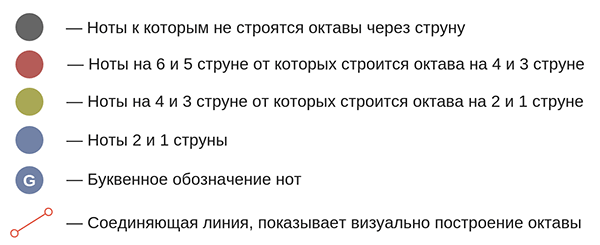
Note C — C

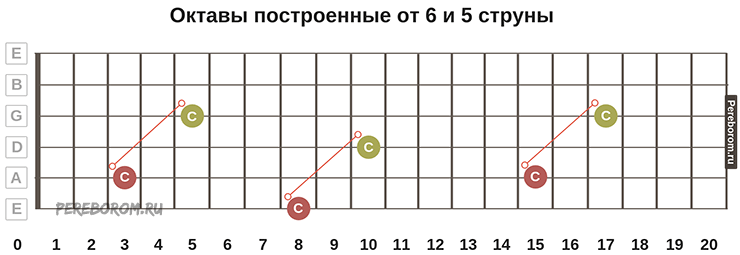
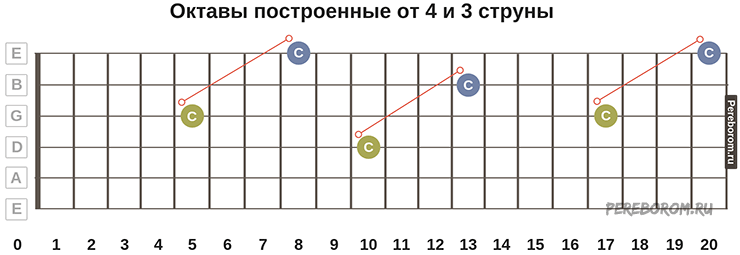
Note D – Re
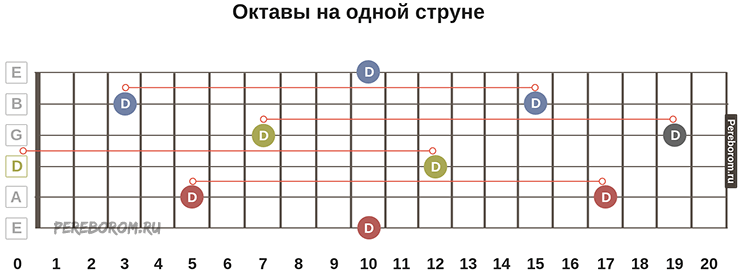
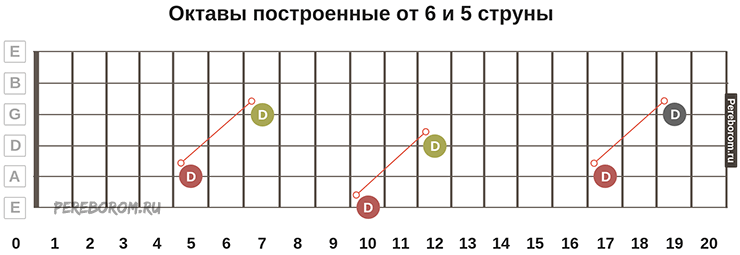
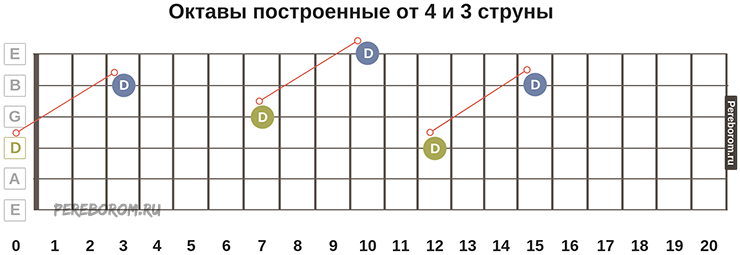
Note E – Mi
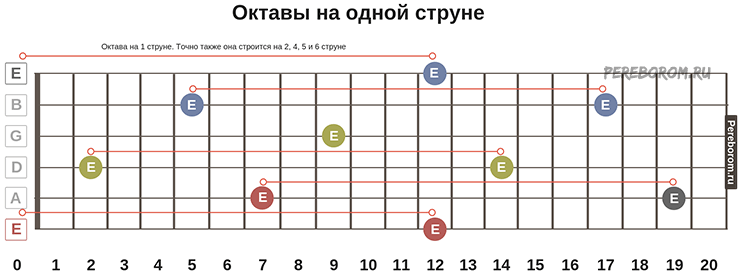
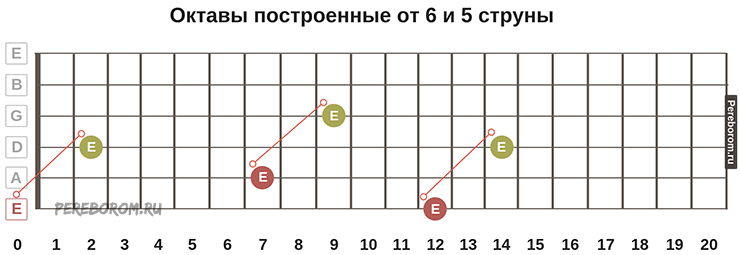

Note F — F

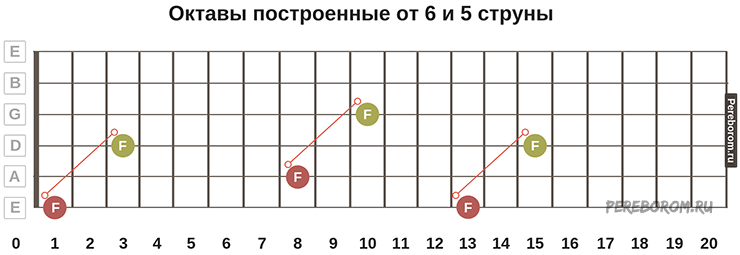
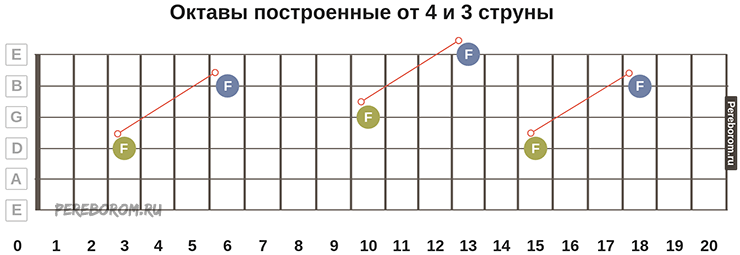
Note G – Salt
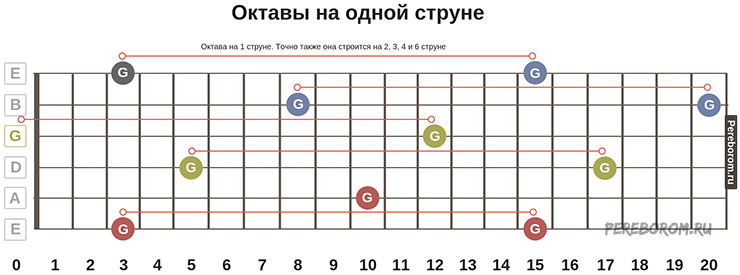
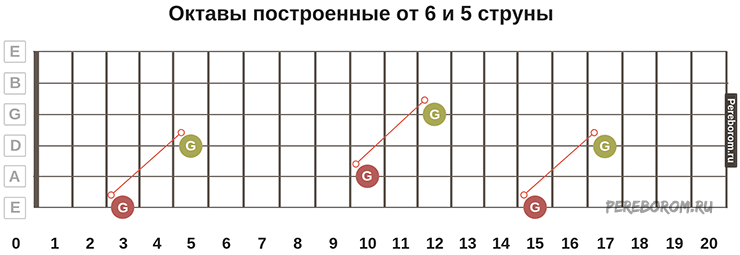
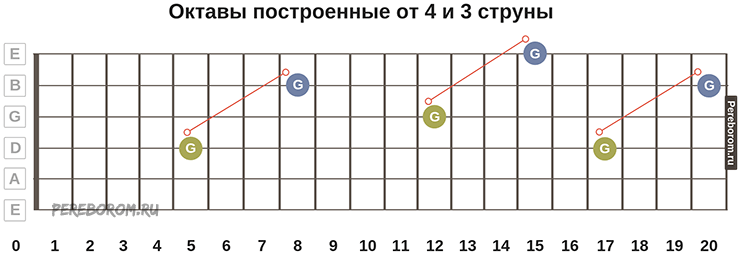
Note A – La
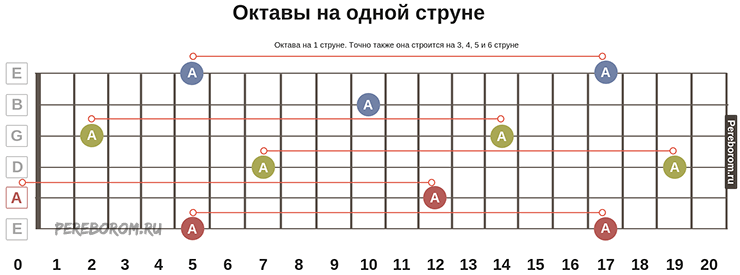
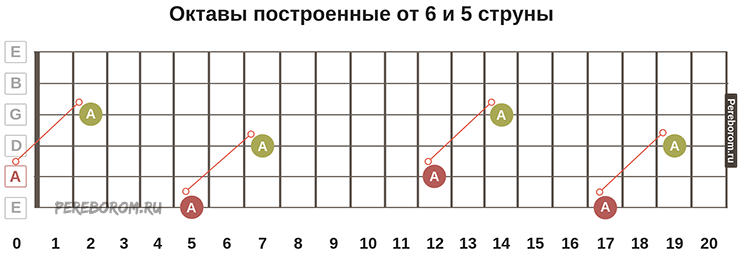

Note B — Si
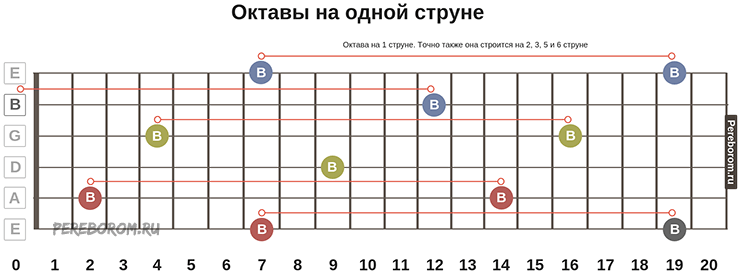
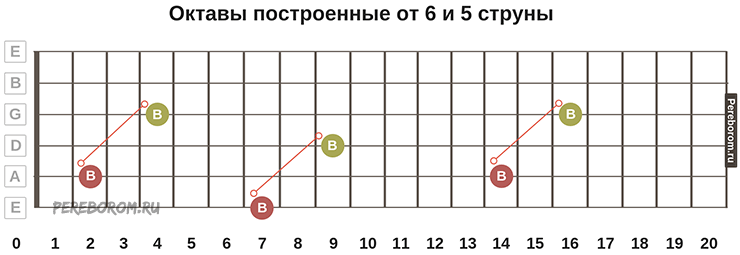

Conclusion





